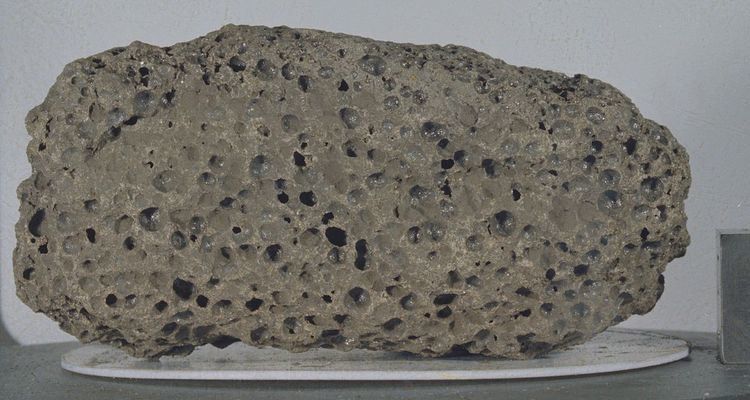 | ||
Lunar Sample 15016, better known as the "Seatbelt Basalt", is a lunar sample discovered and collected on the Apollo 15 mission in 1971 in the Hadley-Apennine region of the moon. The rock is a 0.923 kg (2.03 lb) vesicular olivine basalt. It is so named because mission commander, David Scott, noticed it on the surface while driving the lunar rover and stopped to collect it, but said to mission control that he was just fastening his seatbelt. This unplanned stop was later designated geology station 3, located about 125 meters west of Rhysling crater.
Contents
The seatbelt basalt is currently stored at the Lunar Sample Laboratory Facility at the Lyndon B. Johnson Space Center. A piece of it is on display at the National Air and Space Museum in Washington, DC.
Description
The seatbelt basalt is a highly-vesicular, olivine-normative, basalt with phenocrysts of zoned pyroxene and olivine within a matrix of pyroxene and plagioclase. The rock also contains ilmenite and ulvöspinel.
Age
The rock's cosmic ray exposure age was discovered to be about 285 million years. Another study determined the age to be 315 million years.
The rock's age of formation has been estimated to be approximately 3.29 ± 0.05 billion years from Rb-Sr radiometric dating.
